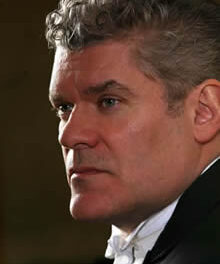Mendelssohn: Complete Music for Cello and Piano, Emanuel Gruber, ‘cello (David Techler, 1706), Arnon Erez, piano (unidentified); (Albumblatt) Assai tranquillo; two Sonatas, No. 1 in B-flat major, Op. 45, and No. 2 in D Major, Op. 58; Song Without Words, Op. 109; Variations Concertantes, Op. 17; Delos DE 3415, © 2011 (rec. in 2009), TT 65:58, $14.98.
Mendelssohn’s music for the ‘cello is not programmed nearly as frequently as that of Beethoven, but does not deserve the neglect it encounters. Neither is it as frequently recorded: Arkiv Music lists 8 vs. 32 recordings currently available respectively (including a set by this duo), a ratio of 1:4! All of the works on this recording were written for and dedicated to ‘cellists whom Mendelssohn knew. Two of them, the Variations Concertantes and the Sonata No. 1, were dedicated to his brother Paul, who, although professionally he followed in his father’s footsteps into the banking world, was a very accomplished amateur ‘cellist.
On this recording, the works are presented in general, but not strict chronological order, because the two shorter ones are placed in reverse chronological order between the two sonatas, which compositionally they preceded and followed respectively, because this makes a more balanced recital program leading up to the longest and most brilliant work for a climactic conclusion. The Albumblatt is most often listed only by its interpretive marking. All of the music displays the composer’s characteristic gift for singing melodies, and the difference in the handling of the forms shows the growth one would expect over the 15 years from the first piece, written when Mendelssohn was 20, to the last major one, the second sonata, composed when he was 35, and which is the clear masterpiece of the set. But even that first work, the Variations Concertantes is lovely, and, differing from Beethoven’s three sets, it is based on an original theme and the variations literally flow smoothly and imperceptibly from one into the other creating a unified single movement whole.
The performances in this recording are excellent and sensitive, capturing the spirit of each of the works and differentiating them from each other, with those in the second sonata the most brilliant. The balance of the instruments is perfect in this piece, and generally good throughout the recording, although occasionally the piano seems too prominent at the expense of the ‘cello, thus compromising slightly the whole. This may, however, be present in the scores: Mendelssohn was a virtuosic concertizing pianist and may have wanted to favor his instrument a bit. Gruber’s and Erez’ ensemble is remarkable, as is each one’s handling of his instrument. Gruber works wonders with the lower strings, to which Mendelssohn gives prominent roles, and Erez makes his piano sing and strum extremely well for a modern one.
The 12-page accompanying booklet contains a note to the listener from Gruber on page 2, and a somewhat rhapsodic essay about Mendelssohn and the works, each described individually, by Lindsay Koob on pages 3-8. This is followed by the bios of the musicians on pages 9-11, with the back cover giving the track listing and timings and the recording credits, as well as Gruber’s dedication of the recording to his parents. The front has a black and white photo of his right hand on the strings of the instrument. The outside of the tray card has the track listings without timings and a color photo of both musicians in informal attire, with Gruber holding the neck of his ‘cello and his bow in his left hand, that appears to be the same one found on the cover of the duo’s Beethoven recording that was highly praised by Gramophone.












